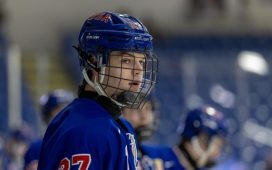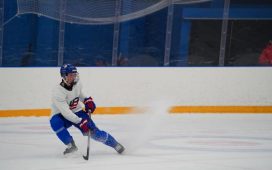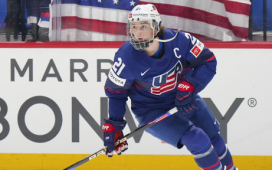The Bruins will have to make a difficult decision when it comes to the protection method, but they shouldn’t lose a single core player up front or on the blueline.

Welcome to the Expansion Plan, our summer series projecting the protected lists for the 30 NHL franchises who will participate in the June 2021 Expansion Draft.
Over the next two seasons, every team – save the Vegas Golden Knights, who will be exempt – will be planning for the arrival of the NHL’s 32nd franchise and Seattle GM Ron Francis will begin to consider the options for his inaugural roster. As such, over the course of the next 30 days, we will profile one team, in alphabetical order, and forecast their potential list of protections and exposures, as well as address each team’s expansion strategy, no-brainers, tough decisions and what lessons they learned from the 2017 expansion process.
This exercise requires some important ground rules. The 2021 Expansion Draft will follow the same rules as the 2017 Expansion Draft, but some assumptions are necessary. These are the guidelines followed:
- No pre-draft trades
- All no-movement clauses are honored
- Players who will become restricted free agents in 2020 or 2021 remain with current teams
- Players who will become unrestricted free agents in 2020 or 2021 either remain with current teams or are left off lists entirely (eg. Nicklas Backstrom protected by the Washington Capitals, Tyson Barrie not protected by Toronto Maple Leafs or any other team.)
• • •
The Boston Bruins didn’t miss a beat coming out of the 2017 expansion draft. In fact, in the two seasons since, Boston has actually moved up in the Atlantic Division and made their way to the Stanley Cup final this past season, losing in seven games to the St. Louis Blues. And as we look ahead to the 2021 expansion draft, there’s no reason why the same good fortune can’t continue to bless the ‘B’s.
The biggest benefit for the Bruins heading toward the Seattle expansion is that the slate is actually fairly clean. David Krejci’s deal comes off the books following the 2020-21 campaign, and the same goes for David Backes, Sean Kuraly and Par Lindholm, while others, including Zdeno Chara, Kevan Miller and Steven Kampfer will also see their deals expire in the coming seasons. Maybe the biggest boon for Boston, though, is the ability to use the same loophole we discussed earlier in the series when addressing the Anaheim Ducks’ plans for Ryan Getzlaf.
Because Tuukka Rask is an unrestricted free agent in July 2021, he technically will not require protection if the Bruins allow his contract to run out. By doing so, Boston can then protect one of their prospect keepers and then reach a deal with Rask once the draft has concluded. Is it risky? Only if Rask has any interest in playing elsewhere, but he’s at the top of his game and a fixture on a contending team in Boston. There’s no reason to explore other options, unless those reasons are purely financial.
PROTECTED (7F, 3D, 1G):
Forwards:
- Patrice Bergeron (NMC)
- Brad Marchand (NMC)
- David Pastrnak
- Jake DeBrusk
- Danton Heinen
- Charlie Coyle
- Trent Frederic
Defensemen:
- Torey Krug
- Charlie McAvoy
- Brandon Carlo
Goaltenders:
NOTABLE EXPOSURES: Tuukka Rask, Matt Grzelcyk, Connor Clifton
STRATEGY: It comes down to keeping the core intact, though part of that is already decided for the Bruins. Bergeron and Marchand are locks to be protected even without NMCs, and the same goes for Pastrnak. After that, though, Boston can start keeping some other offensive talent. DeBrusk is already a 20-goal scorer, Heinen is a valuable middle-six piece and Coyle, who we are assuming signs with the Bruins as part of this exercise, can likewise add offense to the middle of the lineup. Frederic is the wild card here, but he’s projected to be a lineup regular shortly and was a first-round pick only three years ago. The same keep-the-core strategy applies to the blueline, where McAvoy and Carlo are centerpieces and Krug, who also re-signs as part of this exercise, is the offensive driver from the back end.
As noted above, Rask is exposed, but he’s a UFA. Seattle would have to convince him to come be their starter and it’s unlikely the NHL’s 32nd franchise is going to want to pay up to pry a then-34-year-old keeper out of the only big-league home he’s known.
THE NO BRAINER: Using two of the available protection slots on McAvoy and Carlo ensures that the Bruins will continue to be able to ice a solid one-two punch on the blueline. McAvoy has already established himself as a true No. 1 defenseman in the NHL and Carlo’s shutdown play saw him make a name for himself in the post-season. The top four is in good hands as long as both remain in Boston.
THE TOUGH DECISION: Frankly, it’s deciding which protection route to take. Protecting only three defensemen, all of whom are key rearguards, leaves some notable players exposed. Grzelcyk has upside that will make him attractive to Seattle and Clifton’s playoff performance put him on the radar. But leaving proven NHL players exposed might limit the possibility Seattle tries to nab a valuable up-and-comer such as Urho Vaakanainen, who could be a long-term replacement for whoever is lost from the blueline.
LESSON LEARNED: Don’t handcuff yourself with additional NMCs. The Bruins likely would have exposed David Backes in 2017 if not for his clause, but he instead remains on the roster and finds himself as a top trade candidate and a buyout possibility if he remains in Boston into next summer.
Up Next: Buffalo Sabres
Previous: Anaheim Ducks | Arizona Coyotes
(All salary cap information via CapFriendly)
Want more in-depth features, analysis and an All-Access pass to the latest content? Subscribe to The Hockey News magazine.








